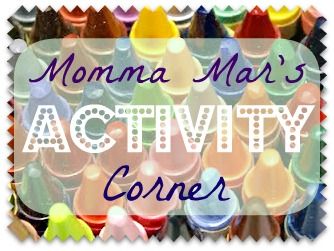We collected several caterpillars while on a nature walk the other day. Of course we had to bring them home and see what they were going to "grow up to be"!
We constructed them a large double-cup home and made sure to poke several small holes on the top. The cups were taped together so we had no escapees! We also added several stalks of the plant they were found on, all creatures need to eat!
After 2 days, three of our guests had gone into Chrysalis.
I released the others back outside and then we waited ....
and waited ....
After 6 days... we have our first butterfly!
A chrysalis is the pupal stage of butterflies. The term is derived from the metallic gold-coloration found in the pupae of many butterflies, referred to by the Greek term χρυσός (chrysós) for gold.
When the caterpillar is fully grown, it makes a button of silk which it uses to fasten its body to a leaf or a twig. Then the caterpillar's skin comes off for the final time. Under this old skin is a hard skin called a chrysalis.
On emerging the butterfly uses a liquid which softens the shell of the chrysalis. Additionally, it uses two sharp claws located on the thick joints at the base of the forewings to help make its way out. Having emerged from the chrysalis, the butterfly will usually sit on the empty shell in order to expand and harden its wings. However, if the chrysalis was near the ground (such as if it fell off from its silk pad), the butterfly would find another vertical surface to rest upon and harden its wings (such as a wall or fence).
Moth pupae are usually dark in color and either formed in underground cells, loose in the soil, or their pupa is contained in a protective silk case called a cocoon.
It is important to differentiate between pupa, chrysalis and cocoon. The pupa is the stage between the larva and adult stages. The chrysalis is a butterfly pupa. A cocoon is a silk case that moths, and sometimes other insects, spin around the pupa.











LOVE the photos, especially the first one. What a valuable experience you have provided. Your son will remember this forever!
ReplyDeleteThis looks so fun! My son had a stick bug pet when he was younger and he loves bugs too! Happy Halloween! Angie xo
ReplyDeleteWalking sticks make great pets! Thanks for stopping by!
DeleteThat is amazing Julie! I would be afraid that the caterpillars would die. I'm not very good at keeping "pets" alive.
ReplyDeleteOur third and final one emerged today! They are just beautiful!
Deletewow they turned into gorgeous butterflies. Very neat!
ReplyDeleteGreat idea! I bought a butterfly house kit. My son loved watching the butterflies emerge.
ReplyDeleteWow, incredible! Such wonderful pictures :)
ReplyDeletehttp://carabossesarmoire.blogspot.com/2012/11/fall-in-air.html
Hello! Just dropping by to let you know I am featuring this on Tuesday Tots today! Wonderful photos! Thanks for sharing it with us and be sure to pop over to Growing A Jeweled Rose to see the feature :)
ReplyDeleteOh, how wonderful!! Such a great lesson to see. Thank you so much for sharing at Sharing Saturday!!
ReplyDeleteYour butterfly is beautiful!! We've done this with the kit but the butterflies are always orange monarchs.
ReplyDeleteThanks for linking up to TGIF! Have a great week,
Beth =-)
Nice information Good Post,Looking for more blogs.
ReplyDeletePlease look here at
Black Magic Astrologer in BTM Layout